By Christopher Miskimon
As spring turned to summer in 1941, America’s thoughts turned unwillingly toward war. While the nation was still reluctant to enter World War II, it now realized it needed to prepare its military, which had languished in the funding-starved 1930s. At the same time, other nations tacitly allied to the United States needed weapons in ever increasing numbers. President Franklin Roosevelt toiled ceaselessly to make America the Allies’ armory, which he called the “Arsenal of Democracy” in a speech to Congress on December 29, 1940.
To achieve this lofty goal would require a supreme and concentrated effort on behalf of government and industry, two groups often at odds in Depression-era America. After the attack on Pearl Harbor, this focus acquired a sharp new edge as the United States now perceived the threat to its own security and existence. The push was now on to make American industry the key to victory in a war of production. A key player in this effort was the Ford Motor Company, one of the nation’s largest automakers. 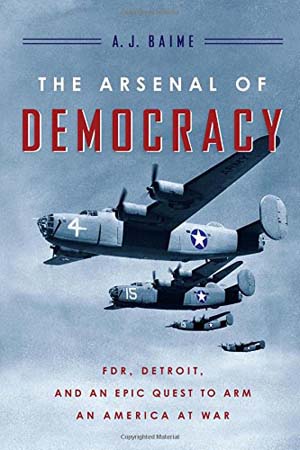
While history records how Ford and other companies became the Allies’ arsenal, most works do not delve into the often tumultuous way this occurred. Rather than a smooth unified transition, the effort was plagued with fits and starts as shortages, politics, and personalities all worked to throw chaos into the order of the factory floors. The Arsenal of Democracy (A.J. Baime, Houghton Mifflin Harcourt Publishers, New York, 2014, 364pp, photographs, notes, bibliography, index, $27.00, hardcover) takes a plain, unedited look at the famous carmakers along with the flaws and strengths that contributed to the story of victory through mass production. A number of key players are covered in detail.
First is Henry Ford himself. A genius of both mechanical engineering and mass production techniques, he proved the near miraculous heights that industry was capable of attaining. By the dawn of the war, however, Ford was a committed pacifist and opponent of the Roosevelt administration. He was also in his 80s and showing signs of senility. Despite this, he would not step down as president of the company until a bitter threat forced him to do so.
His son Edsel Ford was dynamic and brilliant in his own right. He understood the need to compromise with labor and move forward into new areas to keep the company alive. Plagued by illness, his determination measured up to his father’s stubbornness and finally allowed the company’s aircraft plant to achieve the goal of a bomber an hour. While he would not live to see the war through, his son Henry Ford II would prove his father’s equal in business acumen and ability.
As tension between Henry and Edsel grew, key members of the company began to side with one or the other. Charlie Sorenson was a talented engineer who saw Edsel and Henry II grow up and knew they represented the future of Ford. Harry Bennett was hired by Henry to essentially act as an enforcer for the company. As Henry grew old and inflexible, Bennett took advantage and began acting in his own interest, often at the business end of a baseball bat or pistol.
Despite the corporate and family infighting, which at times became almost absurd, Ford became one of the largest defense contractors of the war. It produced B-24 bombers, tanks, aircraft engines, jeeps, gliders, and myriad other weapons and equipment for the Allies. World War II really was a war of production, a war America was well equipped to prosecute and win. Soldiers won the war abroad while factory workers won it on the home front. This is the story of how one company did that.
This work is a refreshing change from reading about the battlefields of the war, revealing instead a battlefield back home where men struggled, mostly without bloodshed, to equip the Allied armies. When I picked it up I was concerned whether a book wholly about production on the home front would keep my attention, but happily it is engaging and informative. The infighting among the Ford family and its confidants reads like a drama but puts a human face on it. Politics, ego, personal opinions, and pride all mixed into the equation and the author does a commendable job sorting through it all to reveal the hidden story of a giant company during wartime. Strengths and flaws are given equal attention, providing a balanced look at a business during wartime, one that is still an economic powerhouse today.
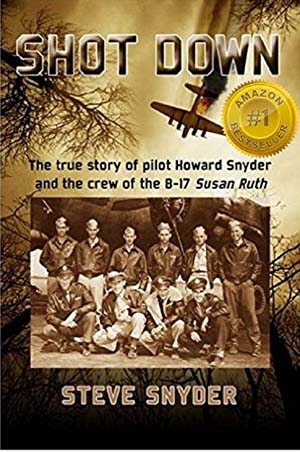 Shot Down: The True Story of Pilot Howard Snyder and the Crew of the B-17 Susan Ruth (Steve Snyder, Sea Breeze Publishing, Seal Beach, CA, 2015, 360pp, maps, photographs, bibliography, index, $27.95, hardcover)
Shot Down: The True Story of Pilot Howard Snyder and the Crew of the B-17 Susan Ruth (Steve Snyder, Sea Breeze Publishing, Seal Beach, CA, 2015, 360pp, maps, photographs, bibliography, index, $27.95, hardcover)
On February 8, 1944, the crew of the Boeing B-17G bomber Susan Ruthtook off from an English airfield for a mission over Frankfurt, Germany. A dozen 500-pound bombs sat nestled in her bomb bays, and 10 crewmen flew the plane and manned its weapons. It was the first time all the men on this plane had flown together. Disaster struck as the bomber formation was attacked by German fighters over Belgium. Susan Ruthwent down close to the border with France.
Several of the crew died, and the others shared various fates. A few were captured immediately and marched off to POW camps. Others were able to evade immediate capture and went into hiding. Of those men, some were later taken prisoner, betrayed by a Belgian Rexist, loyal to the ideals of the occupying Nazi regime. The rest were able to avoid their pursuers and stayed in hiding for seven months, counted as missing in action all that time.
This is a remarkable story revealing the fate of a single bomber crew. It is deeply researched; the author gathered the stories of not only the crew members, but of the Belgian civilians who sheltered them. Official records and interviews complete the story. The book is lavishly illustrated, showing the crew before and after the event along with many showing the environment they served and sometimes died in. Many books have been written about the bomber crews in World War II; this one brings to light personal stories at the airman’s level.
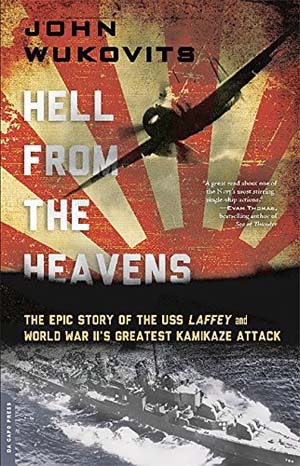 Hell from the Heavens: The Epic Story of the USS Laffey and World War II’s Greatest Kamikaze Attack (John Wukovits, Da Capo Press, Boston, MA, 2015, 320pp, maps, photographs, appendices, notes, bibliography index, $25.99, hardcover)
Hell from the Heavens: The Epic Story of the USS Laffey and World War II’s Greatest Kamikaze Attack (John Wukovits, Da Capo Press, Boston, MA, 2015, 320pp, maps, photographs, appendices, notes, bibliography index, $25.99, hardcover)
During the Battle of Okinawa, the U.S. fleet faced the supreme test of the kamikaze: enemy pilots willing to die to achieve their goal of sinking American ships. It was an act of utter desperation, which in the end could not succeed but would cause great carnage nonetheless. To combat this threat, a picket line of destroyers was stationed around the fleet to give early warning. The USS Laffeywas one of those destroyers assigned the hazardous duty. On the morning of April 16, 1945, the ship’s crew underwent one of the most terrible kamikaze attacks of the war.
For some 80 minutes, the ship was the target of at least 22 enemy planes, of which six struck. The Laffeywas also struck by several bombs and subjected to numerous strafing runs. When it was over, 32 sailors were dead and 71 wounded. The ship was burning, and the destroyer’s survival was in doubt. The crew fought to keep her afloat and was able to get her home to a hero’s welcome. Today the Laffeyis a floating museum in Charleston, South Carolina.
The author has written numerous books on the Pacific War and does not disappoint here. The book is well researched and pulls the reader into the story of the ship and her crew. It is an interesting look at a harrowing 80-minute period when a group of sailors faced the worst their enemies could throw at them, paid a fearful toll, but emerged victorious.
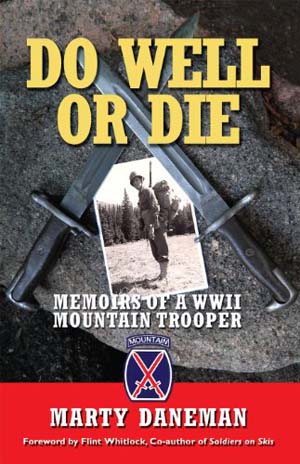 Do Well or Die: Memoirs of a WWII Mountain Trooper (Marty Daneman, Cable Publishing, Brule, WI, 2012, 180pp, maps, photographs, index, $17.95, softcover)
Do Well or Die: Memoirs of a WWII Mountain Trooper (Marty Daneman, Cable Publishing, Brule, WI, 2012, 180pp, maps, photographs, index, $17.95, softcover)
The 10th Mountain Division entered the war in the Italian Theater, fighting its way through the Apennine Mountains against fierce German resistance. In February 1945, the division commander, Maj. Gen. George P. Hays, ordered one of his battalions, which had never seen combat, to attack an enemy position known as Riva Ridge. It was literally a tall order; the troops would have to climb a steep cliff to get at the Germans. To achieve surprise they would have to go in without artillery preparation. Further, their rifles would be unloaded to prevent a discharge from alerting their foes. When an officer commented that the mission looked suicidal, General Hays told him, “You will do well or you will die.”
That statement set the tone for the rest of the division’s time during the war. It took the ridge and went forward from there. The unit never lost a battle from that time forward, nor did it ever lose ground to its enemies. The story of how this was achieved is well told from the point of view of one of the division’s soldiers. The author, a Jewish boy from Chicago, became an expert on skis, climbing gear, and all the other things that made the unit unique in action. Here he retells the story of his unit through his own experiences.
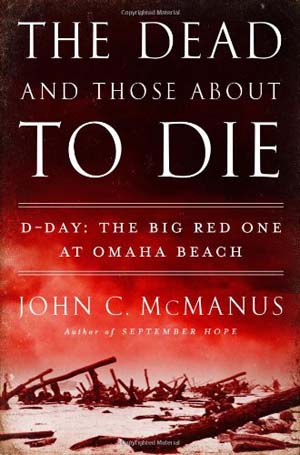 The Dead and Those About to Die, D-Day: The Big Red One at Omaha Beach (John C. McManus, NAL Caliber, New York, 2014, 367pp, maps, photographs, notes bibliography, index, $27.95, hardcover)
The Dead and Those About to Die, D-Day: The Big Red One at Omaha Beach (John C. McManus, NAL Caliber, New York, 2014, 367pp, maps, photographs, notes bibliography, index, $27.95, hardcover)
D-Day, June 6, 1944, was one of the most important days in human history. The success or failure of the invasion of Nazi-occupied Europe would decide what the world would look like for decades afterward. For the Americans, Omaha Beach was the supreme test and the 1st Infantry Division, nicknamed the Big Red One, would face a horrid maelstrom of bullets, shrapnel, and explosives that threatened to force it back into the sea. One by one, however, individual soldiers took heroic actions that secured the unit’s lodgment ashore and thus the success of the attack.
Books on D-Day abound to the point where one more seems to blend with the rest. What makes this volume stand out is the focus on the small actions that made up the larger whole. The entire book covers just that one day on Omaha Beach, nothing more, allowing the author to delve into extreme detail. Readers who want to know the battle at the lowest level, where the sands of the beach mixed with the blood of those who seized it, will find this book of interest.
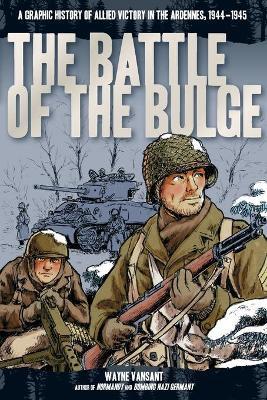 The Battle of the Bulge: A Graphic History of Allied Victory in the Ardennes, 1944-45 (Wayne Vansant, Zenith Publishing, Minneapolis, MN, 2014, 104pp, $19.99, softcover)
The Battle of the Bulge: A Graphic History of Allied Victory in the Ardennes, 1944-45 (Wayne Vansant, Zenith Publishing, Minneapolis, MN, 2014, 104pp, $19.99, softcover)
The Bulge was the single largest battle ever fought by the United States. Nazi Germany threw the best it had left at the American army, but in the end it was not enough. There is much more to the story, however. Between the Germans’ first attack and their final defeat over a month later is a tale of suffering, courage, fear, steadfastness, and ultimate triumph. American soldiers, cold, far from home, and often isolated, kept fighting under harsh conditions, fatally delaying the Nazi timetable while other units outside the Bulge counterattacked and eventually drove the Germans back in utter defeat.
The graphic book is not commonly used in military history and is unfamiliar to many readers. Wayne Vansant has brought new life into the genre by creating a comic-like softcover reminiscent of the war comics of the 1960s such as GI Combat. This new volume is historically accurate, clearly drawn, and appropriate for interested young readers of middle school age. While depicting combat, it is not gory or gratuitous in depicting the battle. A number of other titles are available from the same author.
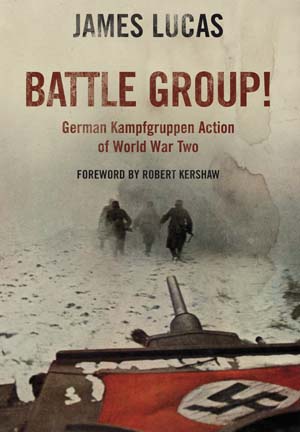 Battle Group! German Kampfgruppen Action of World War Two (James Lucas, Frontline Books, Yorkshire, UK, 2014, 192pp, maps, photographs, index, $19.99, softcover)
Battle Group! German Kampfgruppen Action of World War Two (James Lucas, Frontline Books, Yorkshire, UK, 2014, 192pp, maps, photographs, index, $19.99, softcover)
The German Army was famous for its ability to hastily form combined arms fighting units as a quick response to changing battlefield conditions. Known as Kampfgruppen, or battle groups, these forces were often named for their commanding officer. Early in the war they were often well-organized task forces usually formed from units within the same division to accomplish a specific goal, such as making an attack at a critical point or sealing off a breach in the German lines. Once their mission was accomplished, the component parts of the Kampfgruppe would split apart again and prepare for their next mission, perhaps with a different set of comrades in a new Kampfgruppe.
As the war continued and the situation became more desperate, the formation of Kampfgruppen became a much more ad hoc affair. As the German Army fought to hold territory against the punishing Allied onslaught, scratch forces were thrown together using whatever units were available. Armor and artillery became ever scarcer until Kampfgruppen often held little more than half-trained infantry or ill-equipped Volkssturm militia. In the end these groups faced utter destruction, often to allow those behind to escape capture, even if only for a little while. Still, during their heyday they were an example of the flexibility and professionalism of the German Army.
Stories of various Kampfgruppen throughout the war fill this book. Each is a well-chosen example that reveals the way these forces were organized and led from the first battles in Poland in 1939 to the last struggles of 1945. The author spent years gathering interviews with German veterans for his books, and it shows here in the personal details included in the text.
 When Paris Went Dark: The City of Light Under German Occupation, 1940-44 (Ronald C. Rosbottom, Little, Brown and Co., New York, 2014, 447pp, maps, photographs, appendix, notes, bibliography, index, $28.00, hardcover)
When Paris Went Dark: The City of Light Under German Occupation, 1940-44 (Ronald C. Rosbottom, Little, Brown and Co., New York, 2014, 447pp, maps, photographs, appendix, notes, bibliography, index, $28.00, hardcover)
Paris under German occupation is almost a cliché of World War II, but what was it really like? German tanks rolled into the city a mere eight days before France surrendered, leaving the populace with little choice but to quickly adapt to the new situation and its new overlords. Some chose the path of outright collaboration, while most walked a path of nervous neutrality, simply trying to stay out of the Nazis’ way. A few decided to resist. They were a disparate group, many of whom would never have met without the pressure of wartime occupation to force them together. The methods of their resistance were small and large, ranging from the tiniest act of disobedience to large-scale violence and uprisings.
This new work covers the broad range of how Parisians fought back against their German overlords. The author’s research produced extensive material that is blended seamlessly into a detailed narrative and provides an in-depth look at one of the most important bastions of the French Resistance during World War II.
New and Noteworthy
 Swan Song 1945: A Collective Diary of the Last Days of the Third Reich (Walter Kempowski, W.W. Norton and Company, 2015, $35.00, hardcover) This book is full of excerpts from the diaries of soldiers, civilians, and politicians during the last days of the war. Both famous figures and common people are included in the accounts.
Swan Song 1945: A Collective Diary of the Last Days of the Third Reich (Walter Kempowski, W.W. Norton and Company, 2015, $35.00, hardcover) This book is full of excerpts from the diaries of soldiers, civilians, and politicians during the last days of the war. Both famous figures and common people are included in the accounts.
Hitler’s Last Witness: The Memoirs of Hitler’s Bodyguard (Rochus Misch, Frontline Books, 2014, $32.95, hardcover) The author was wounded in Poland in 1939 and later invited to join Hitler’s bodyguard troops. He observed the Nazi dictator even during informal times.
The Second Pearl Harbor: The West Loch Disaster, May 21, 1944 (Gene Eric Salecker, University of Oklahoma Press, 2014, $34.95, hardcover) In May 1944, an explosion tore through a group of landing ships assembled in Pearl Harbor for the invasion of Saipan. This book investigates the disaster and its cause.
 A World Elsewhere: An American Woman in Wartime Germany (Sigrid Macrae, Viking Books, 2014, $27.95, hardcover) The author’s mother married a penniless German noble, lived through Nazi Germany, and lost her husband during the war. She later had to flee with six children from the advancing Soviets.
A World Elsewhere: An American Woman in Wartime Germany (Sigrid Macrae, Viking Books, 2014, $27.95, hardcover) The author’s mother married a penniless German noble, lived through Nazi Germany, and lost her husband during the war. She later had to flee with six children from the advancing Soviets.
Forgotten Heroes of WWII: Personal Accounts of Ordinary Soldiers (Thomas E. Simmons, Taylor Trade Publishing, 2014, $18.95, softcover) This is a collection of 14 veterans’ experiences of the war. Each tells a story of the war on land, sea, or air.
Proudly We Served: The Men of the USS Mason (Mary Pat Kelly, Naval Institute Press, 2015, $24.95, softcover) The destroyer USS Masonhad an African American crew. It was the only ship so crewed to enter combat during the war, escorting convoys in the Atlantic.
War Bonds: Love Stories from the Greatest Generation (Cindy Hval, Casemate Publishers, 2015, $24.95, hardcover) This is a collection of stories about couples who met during the war. It reveals how they built and maintained lasting relationships borne in conflict.
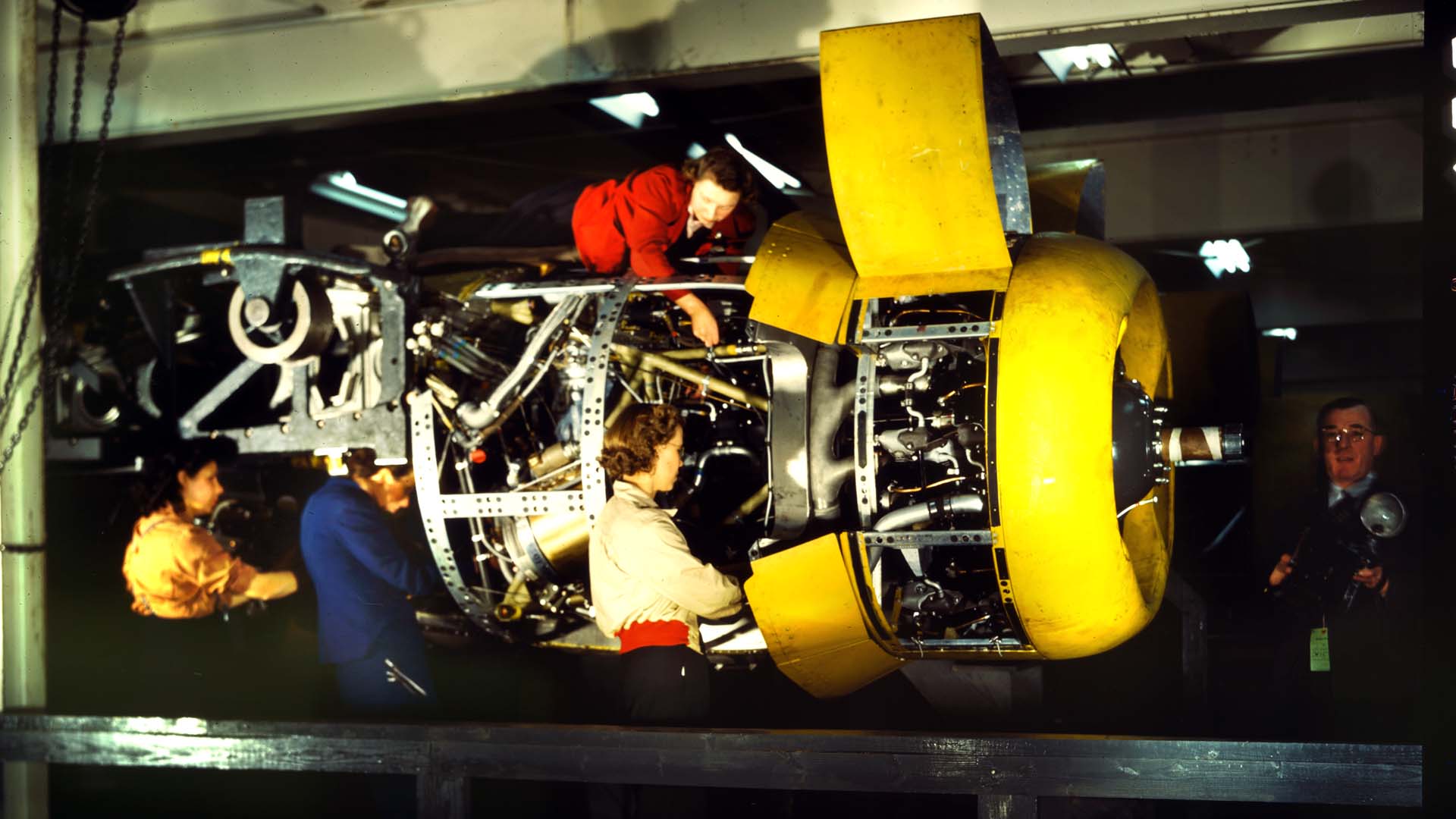
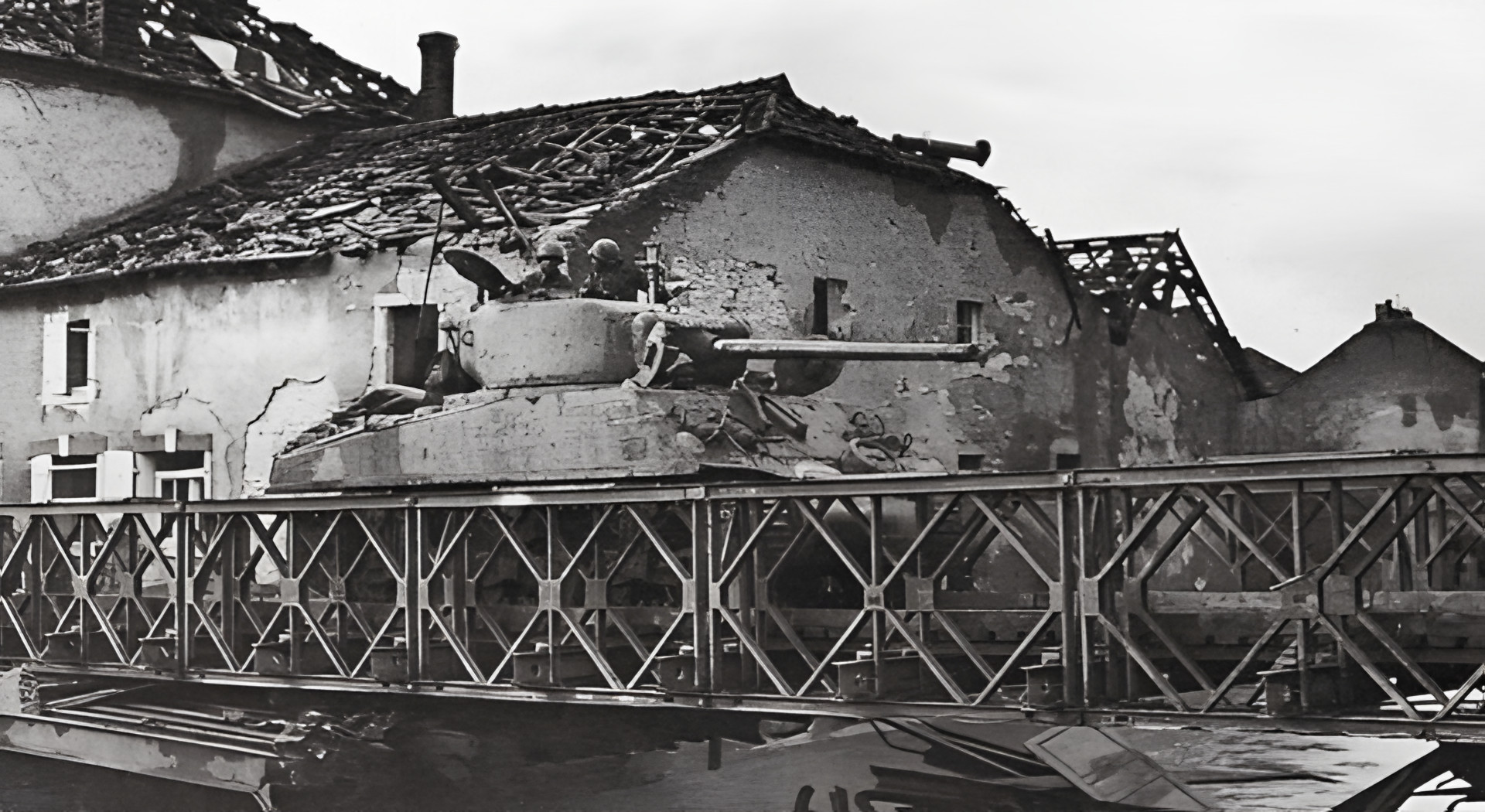
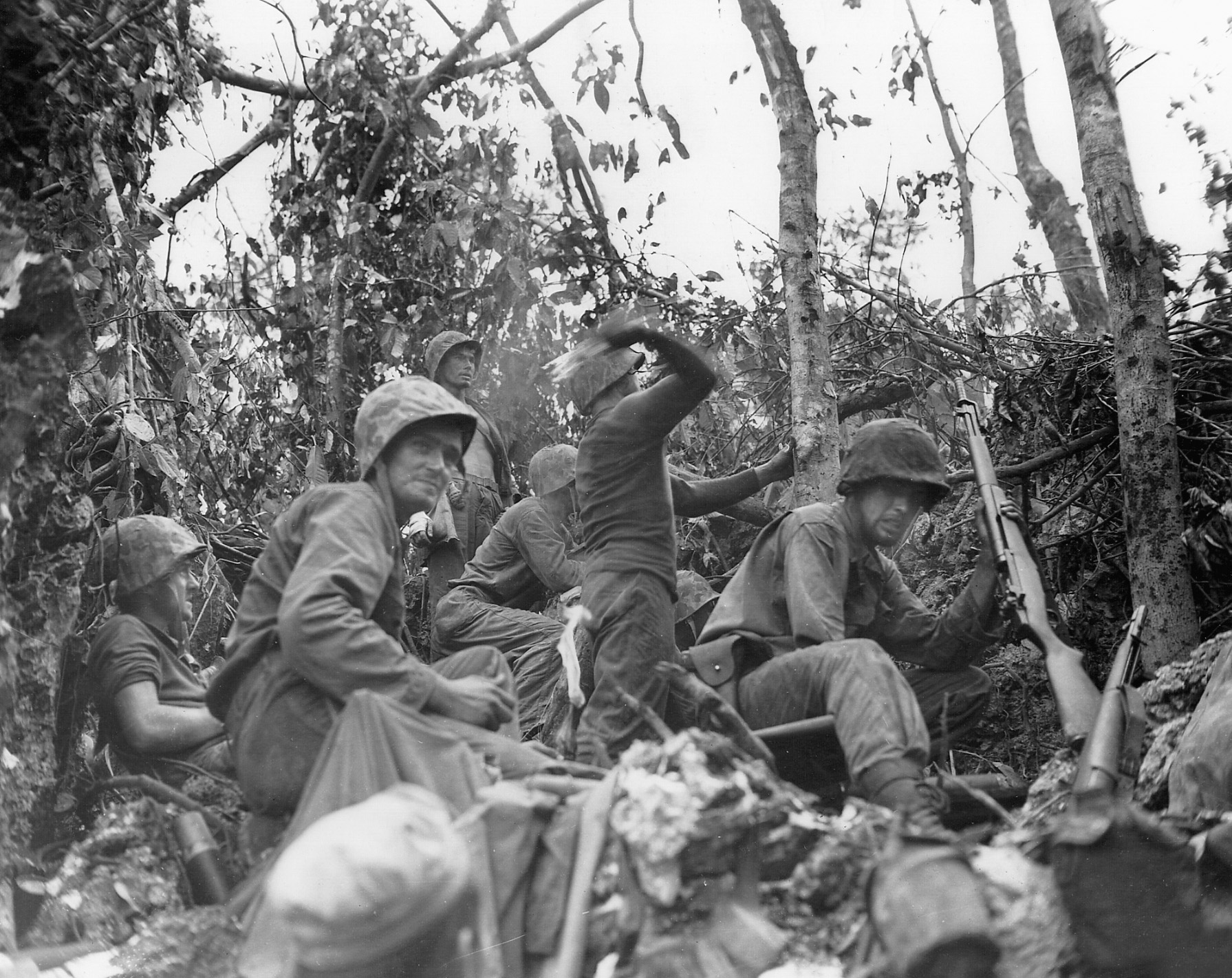
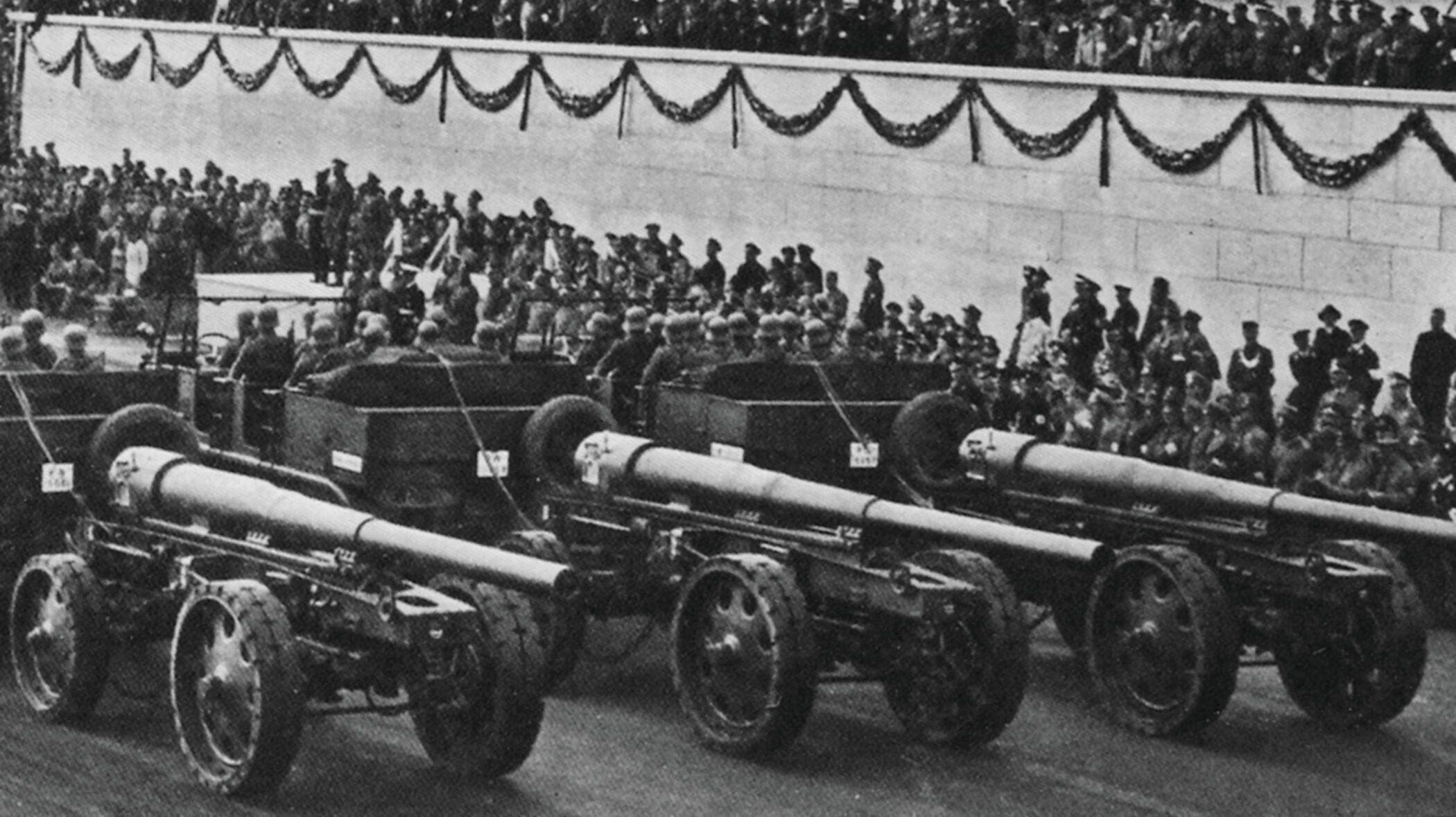
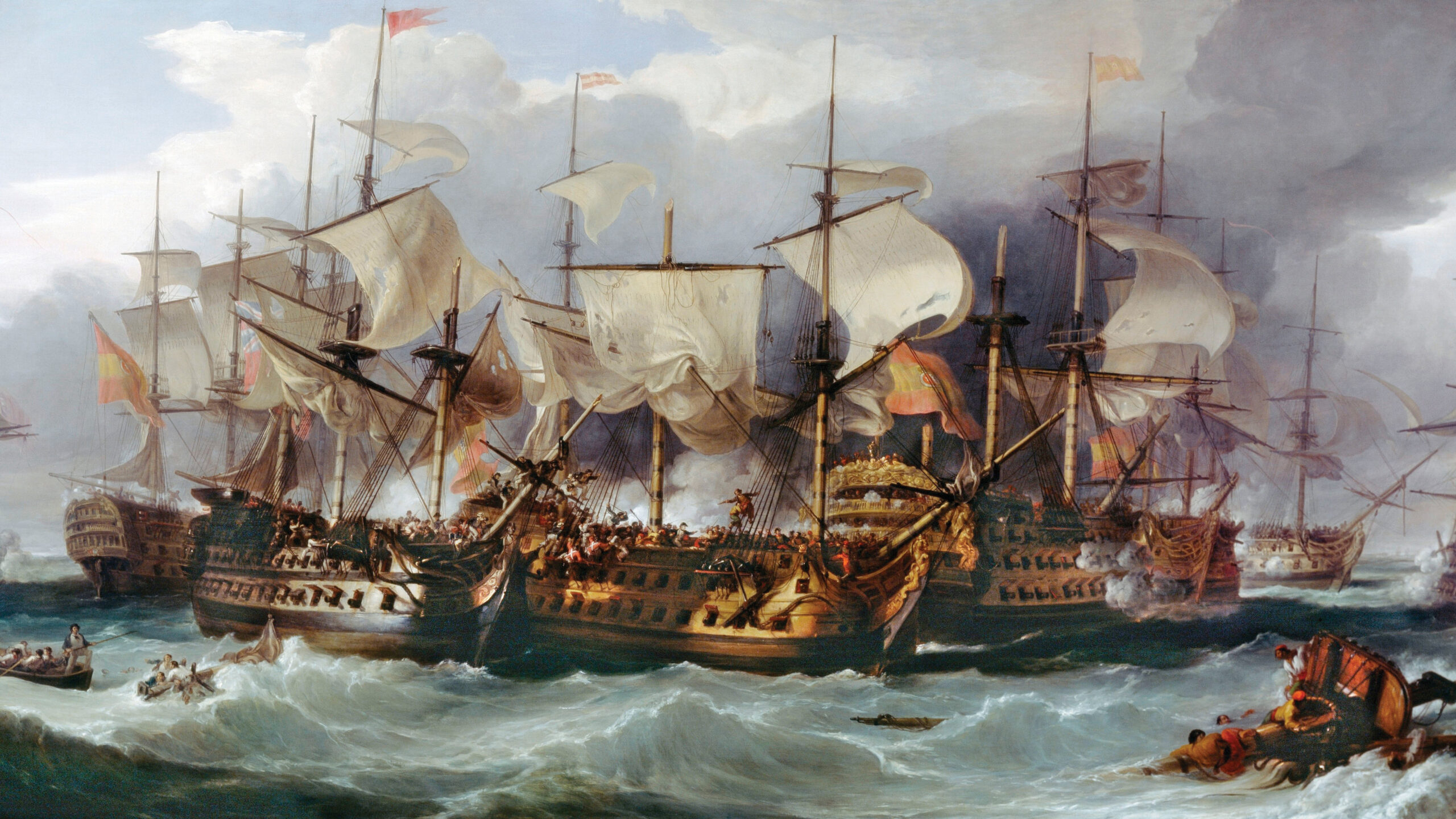
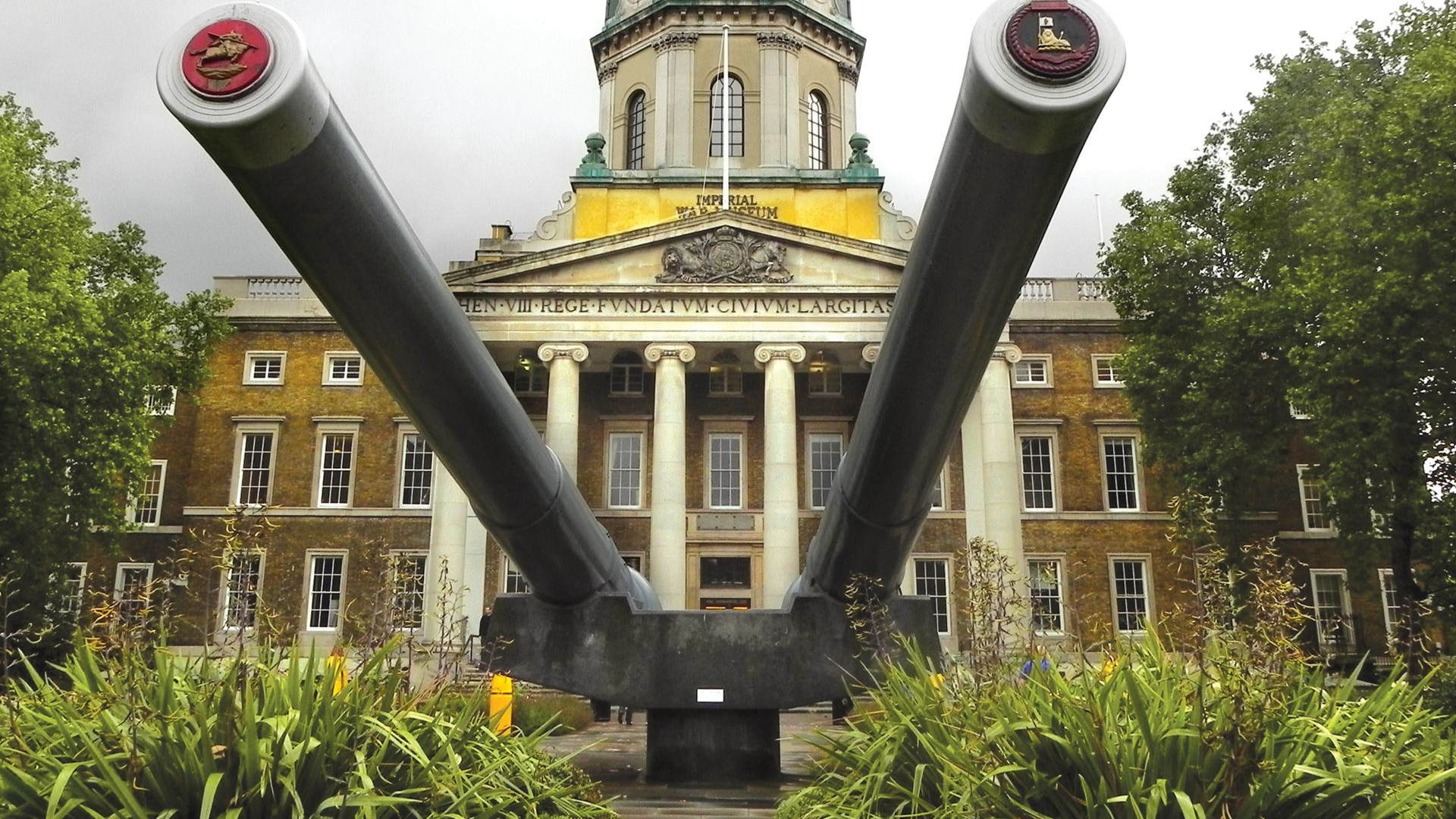
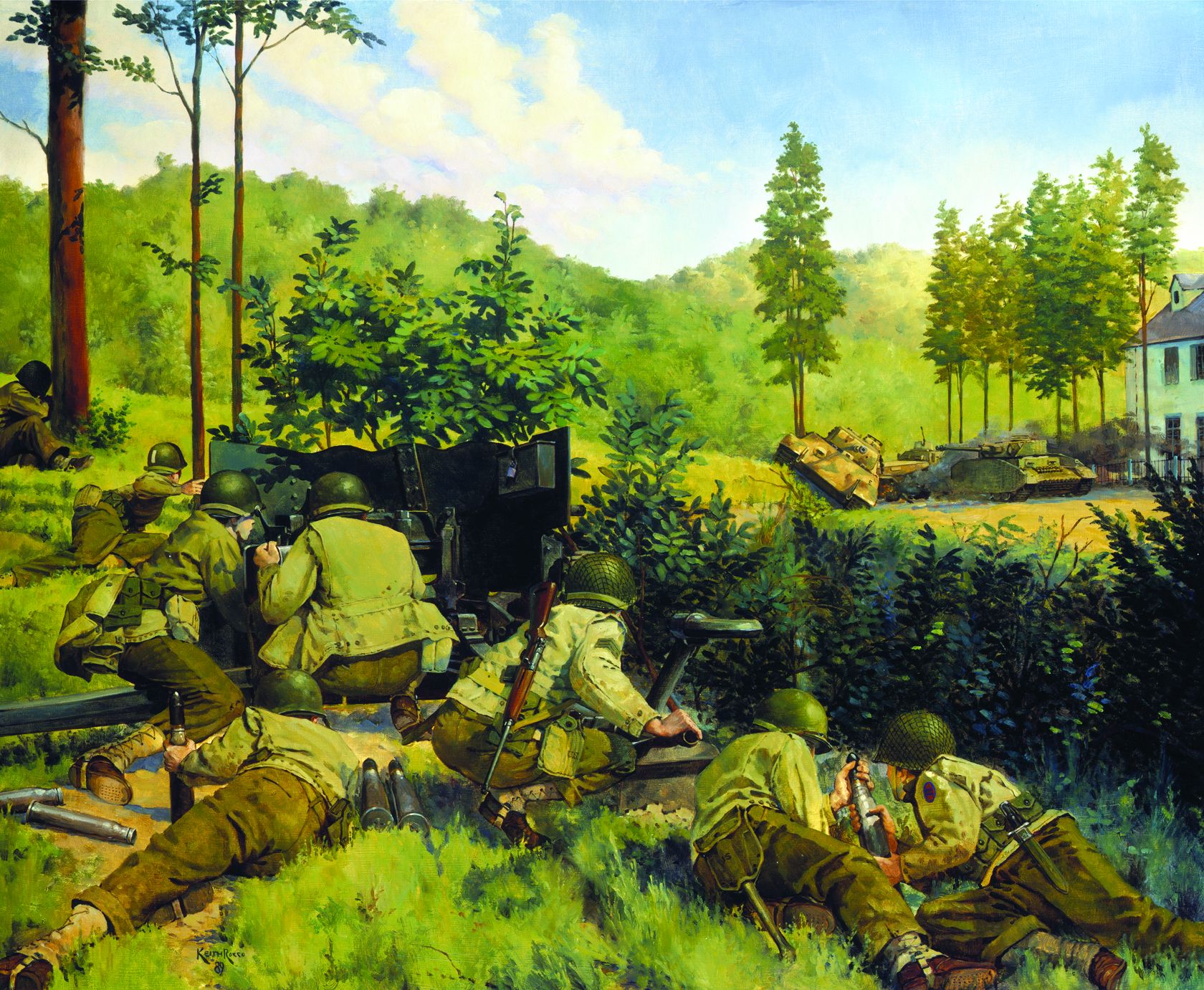
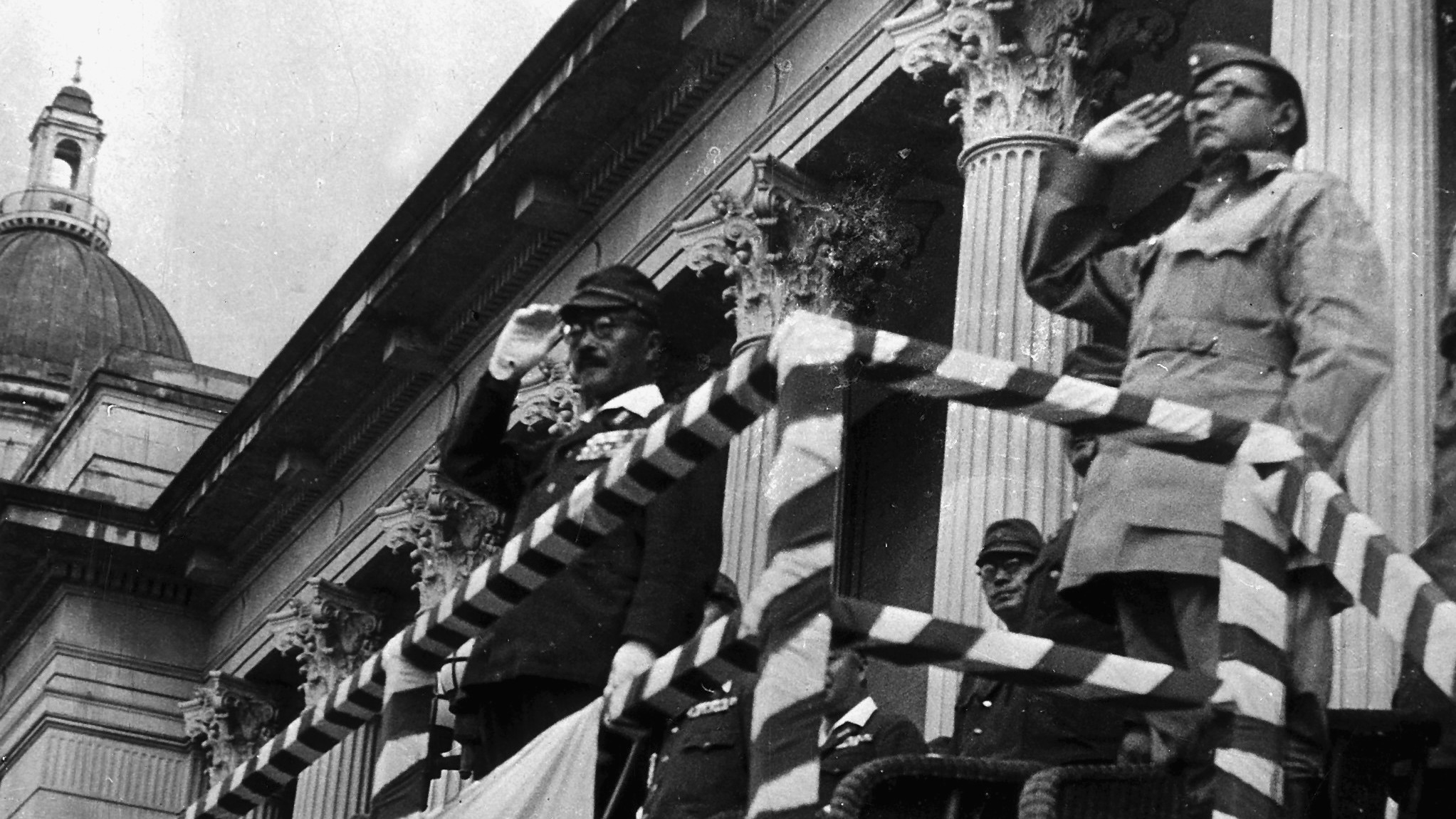
Join The Conversation
Comments
View All Comments